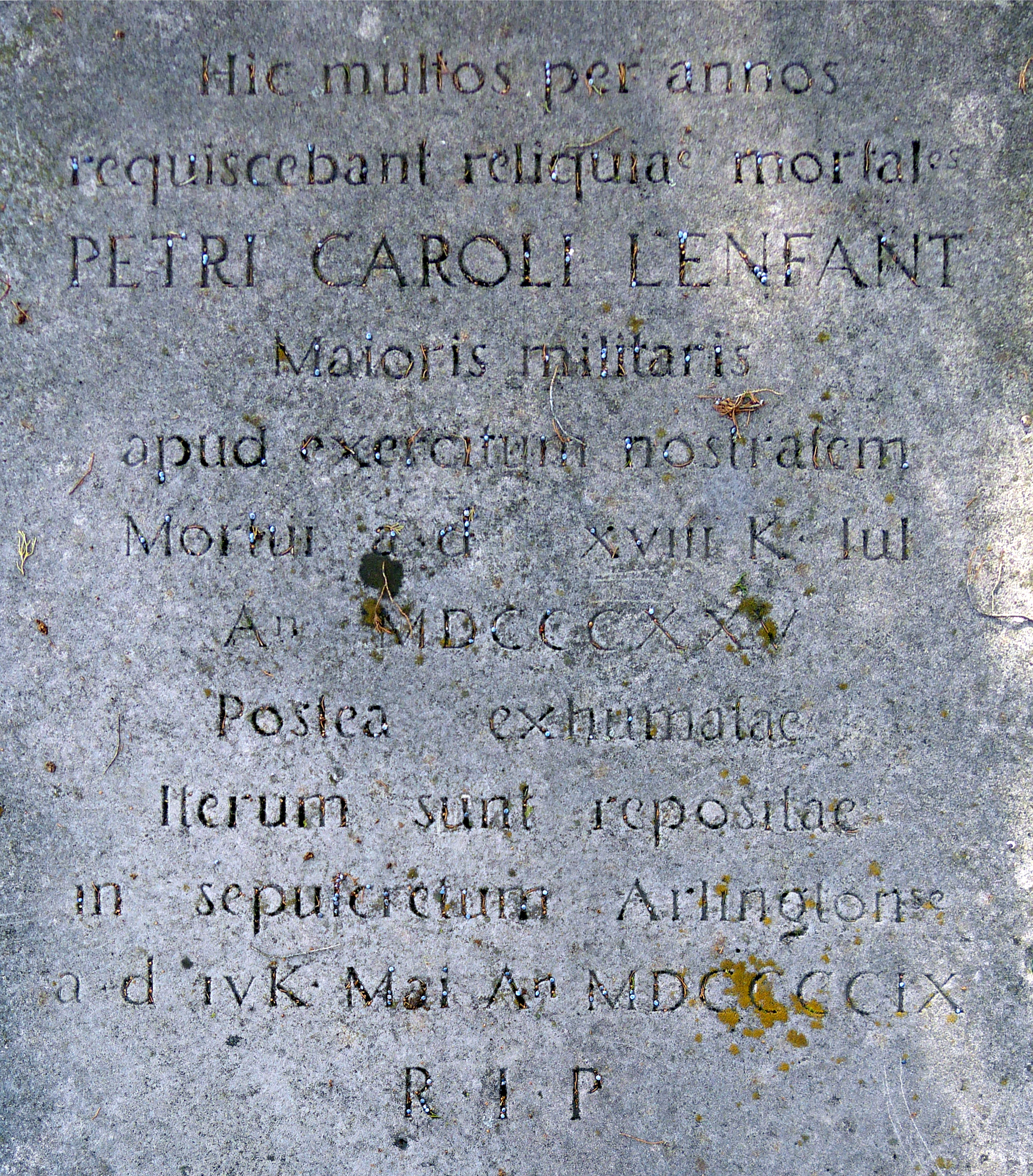L'Enfant's Latin Epitaph...
...on the cenotaph behind the Pallotine Seminary at Green Hill, 2009 Van Buren Road, Chillum.

requiscebant reliquiae mortales
Petri Caroli L'Enfant
Majoris militaris
apud exercitum nostratem
Mortui a. d. XVIII K Iul
An MDCCCXXV
Iterum sunt repositae
in spulcretum Arlingtonse
a. d. IV K Mai An MDCCCCIX
R.I.P
In English that's roughly:
Here for many years rested the mortal remains of Major Pierre Charles L’Enfant U.S. Army. Died June 14, 1825. They were deposited again in a sepulcher at Arlington April 28, 1909.
But how does "a.d. XVIII K Iul An MDCCCXXV" come to mean "June 14, 1825"?
The Latin Calendar
First we need to expand the acronyms: "a.d." here means "ante diem", in English "days before"; XVIII are the Roman numerals for 18; K stands for "Kalendas", the Calends ; "Iul" abbreviates "Iulias", July; And "an" represents "anno", year. And of course MDCCCXXV represents 1825.
So the date is "18 days before the Calends of July year 1825"
In the Latin Calendar, days are denominated as a number of days before (ante diem) one of the sacred days. The Calends is the first day of the month. It represents the first cresent of the new moon on the old Roman Lunar Calendar. The Nones, the 5th or 7th of the month, represents the first quarter moon in the lunar system and the Ides falls on the 13th or 15th of the month representing the full moon in the lunar system.
So the Calends of July is the first of July and 18 days (inclusive) before the first of July is the 14th of June. i.e. "a. d. XVIII K Iul an MDCCCXXV" = June 14, 1825, the date of L'Enfant's death.
Similarly "a. d. IV K Mai An MDCCCCIX", 4 days before the Calends of May, 1909, is April 28, 1909 the day L'Enfant was re-interred at Arlington.
See NovaRoma for more a more thorough discussion of the Latin Calendar